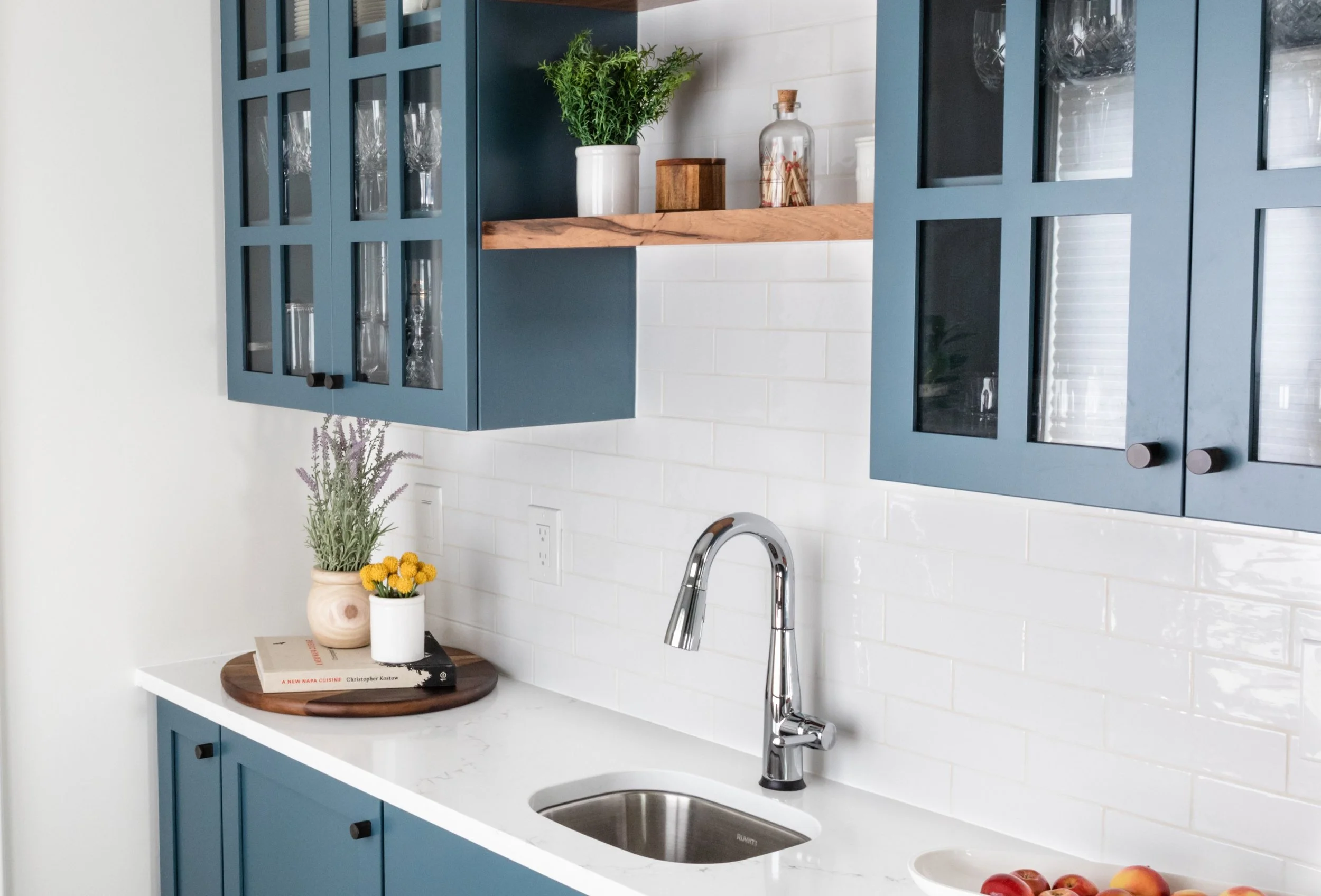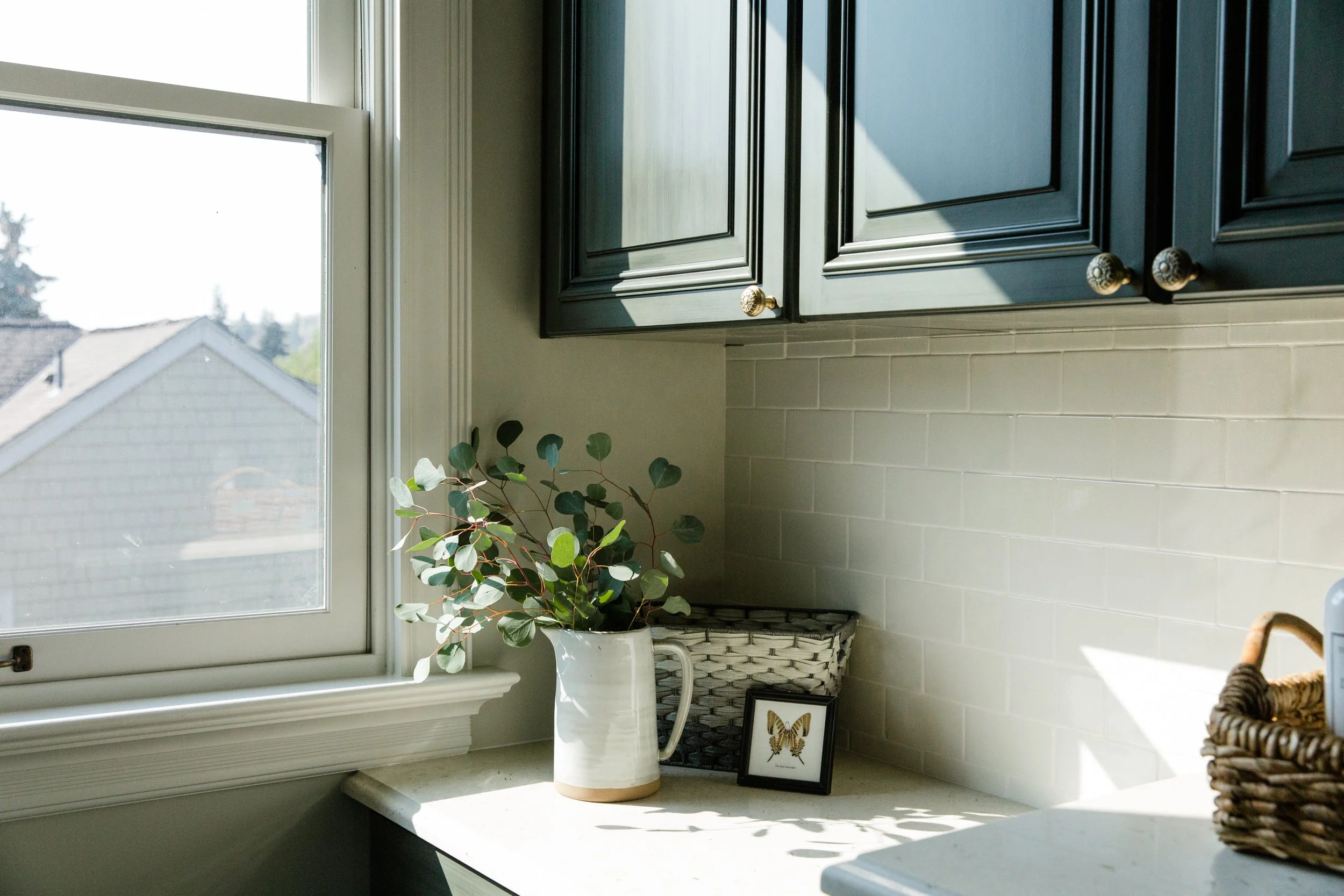Ask an Expert: Surface Materials Edition
Welcome back to the latest edition of Ask The Expert. This month, it’s all about making your renovation rock—literally. We’re talking about granite, quartz, marble, and all the beautiful materials we use to elevate surfaces and make your space feel special.
It can be a little overwhelming to navigate the surface materials space. There’s so much to choose from! Amy from Architectural Surfaces was generous enough to share her time and expertise with us and offer tips for how to make the most of your surface materials journey.
This interview has been edited for length and clarity.
Photography by Mary Hatch; Counter Material Misterio Polished Quartz by Architectural Surfaces
Meet Amy Davidson, our surface materials expert!
Sami: I always like to kick things off with a little introduction. What is your job title? How would you describe the work that you do?
Amy: My title is Account Manager. I get to interact with many different customers within our product distribution channel-from the fabricators who prepare and cut the stone for specific projects to the designers and architects who specify our materials. I love developing these relationships by providing the expertise and support to ensure the experience is the best it can be and that the end result is a success.
I’ve always loved design. I found my way into my current role after working for many years in the interior design and furniture industries. To be a part of the selection process of solid surfaces such as quartz, marble, and granite and being involved in the building process was really appealing to me from a designer’s perspective.
The selection and decision-making process
Sami: Next, let’s talk about something I think is on many homeowners’ minds. What do you think is the first step for homeowners who are planning a design project that involves new countertops?
Amy: Countertop selection sets the tone for the overall look of a kitchen or bathroom. I think the first step is determining what the look is you are going for. Is it subtle, or do they want the countertops to be the “star of the show” with bold colors and/or patterns? Based on this, we can recommend options that fit either direction in both our natural stone and PentalQuartz.
Sami: I love the idea of a bright, bold countertop! My next question is: How can homeowners prepare for their consultation?
Amy: It can be very overwhelming to come in and look at stone options if you are not familiar with the different types. We have a fantastic website which is a wonderful resource for learning about the different stone options before you come in to see things in person.
For example, someone may be set on choosing quartz, which is an engineered stone, but after they do a little research and discover you cannot put a hot pan on it, they may decide that it’s not the best choice for their project. After learning about different types of stones, they may choose granite, for example, which is a little more durable and can handle hot pots and pans being set directly on it.
Sami: What are three questions someone should ask before shopping for new surface materials?
Amy: What is the look and feel they are going for, how should it function, and budget. A side note on budget—Architectural Surfaces is a wholesaler supplier, so a quote for the project will need to come from their fabricator. However, we can steer them to materials based on how things fall into our price category levels.
Common challenges (and how to avoid them!)
Sami: What do you wish that more homeowners knew about the process of choosing new surface materials?
Amy: I would say it can be a complicated process. Keeping an open mind is helpful in narrowing down what the best choice is. Being laser-focused on something specific may mean you miss out on other great options.
Sami: What are the most challenging materials to shop for?
Amy: I think natural stone can be challenging for people to select because each individual slab is so unique. You might have to look at many slabs before you find “the one.” That can be overwhelming! Some fabricators may also have a preference for the type of stone that they work with. For example, quartz versus natural stone.
Sami: What common challenges, inconveniences, and stumbling blocks should homeowners be prepared for during this process? And—how can they avoid them in the first place?
Amy: One thing I have seen happen quite often is when people shop too early for natural stone. Their project may be a year or two out, and they fall in love with a certain quartzite or granite—and then are disappointed when they cannot find it again when the material is actually needed. We can hold slabs for thirty days at our location, so timing is important for selecting natural stone.
Sami: I've heard with supply chain backups and whatnot that some people are getting storage units so that they can save some of that product for a later date too.
Amy: Yes, absolutely! If that's an option, it’s fantastic if somebody can select a slab and have it stored so that it's there when they're ready.
What does success look like?
Sami: What are the measures of success during a countertop project?
Amy: Ultimately, I think it is meeting the customer’s satisfaction. Whether that is for a home or a commercial project, adding value to the project by meeting the goals for both function and design are the most important results..
Sami: What is your number one tip you would like to share with homeowners?
Amy: I would say to choose material that you love and want to look at every day—not what is trending in magazines or on social media. I also think it’s important to complement the design and architecture of the house. For example, a mid-century modern home could have certain countertops that look fantastic in that setting but may not be right in a historic craftsman home.
“choose material that you love and want to look at every day—not what is trending in magazines or on social media”
Rising design trends and inspiration
Sami: Can you tell us about a recent project that inspired you or you’re excited about?
Amy: Yes, there is a charming development in Ocean Shores that I was able to tour recently, which is using our PentalQuartz for kitchen and bathroom countertops in their newly constructed beach cottages. They really stood out and gave the homes a fresh, modern feel.
Sami: Are there any trends that you’ve been noticing lately?
Amy: People seem to be moving away from the all-white kitchen trend and moving to options with more unique patterning and warmer tones. I also see people gravitating to using color. For example, our Blue Roma and Ijen Blue quartzite.
Photography by Emily Keeney; Counter Material Akoya Polished by Architectural Surfaces
Budgets, costs, and more, oh my!
Sami: Breaking down the budget: What are the typical low, medium, and high budget ranges for a countertop renovation that a homeowner could expect?
Amy: The cost of the installed countertop is affected by several variables. Of course, the material is a leading factor, but also the complexity of the design. Features such as cascading waterfall edges with the stone placed vertically from the top of the counter down to the floor, full height backsplash with many electrical cutouts, mitered edges to give the stone a thicker appearance, or exceptionally large island pieces are examples of design features that may add to the labor component of the total project price.
In the Seattle market, consumers can expect to pay $50 to $55 per square foot for the lowest entry-level granite countertops. Mid-level quartz and granite may be in the $70 to $80 per square foot range. The high range varies considerably when choosing materials such as high-end quartzites or porcelain slabs, where projects can hit $150 per square foot or higher depending on the design complexity.
Sami: Do you have any tips for homeowners on a budget?
Amy: First, find the right fabricator for your project. The Seattle area is full of talented shops that will deliver a quality installed product. Some shops are geared for high volume production work, while others are more focused on custom work, requiring more of a craftsman’s touch.
Visiting a fabricator’s shop can help you find a comfortable fit. Ultimately, the fabricator controls the price of your project based on the material and the scope of work. When you visit them, it is helpful to bring any pictures, design layouts, or plans you may have so that the fabricator can have a good understanding of your project when they price it.
I want to give a big thanks to Amy for taking the time to share her expertise and experiences with us! Visit https://arcsurfaces.com/ if you’re ready to begin a conversation with a surface materials expert. Want to learn more? Sign up for our weekly newsletter here to receive renovation tips, inspiration, and more.

